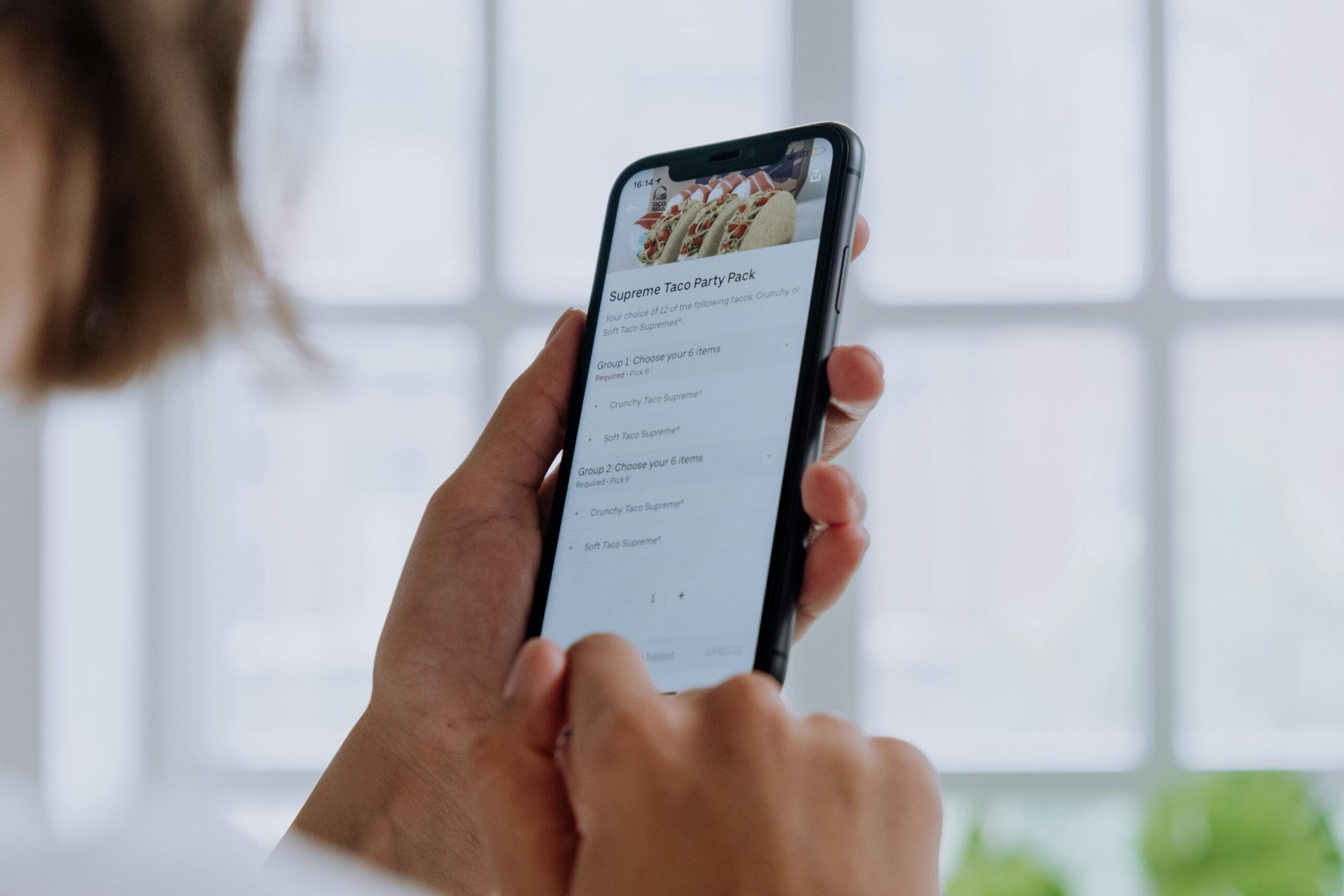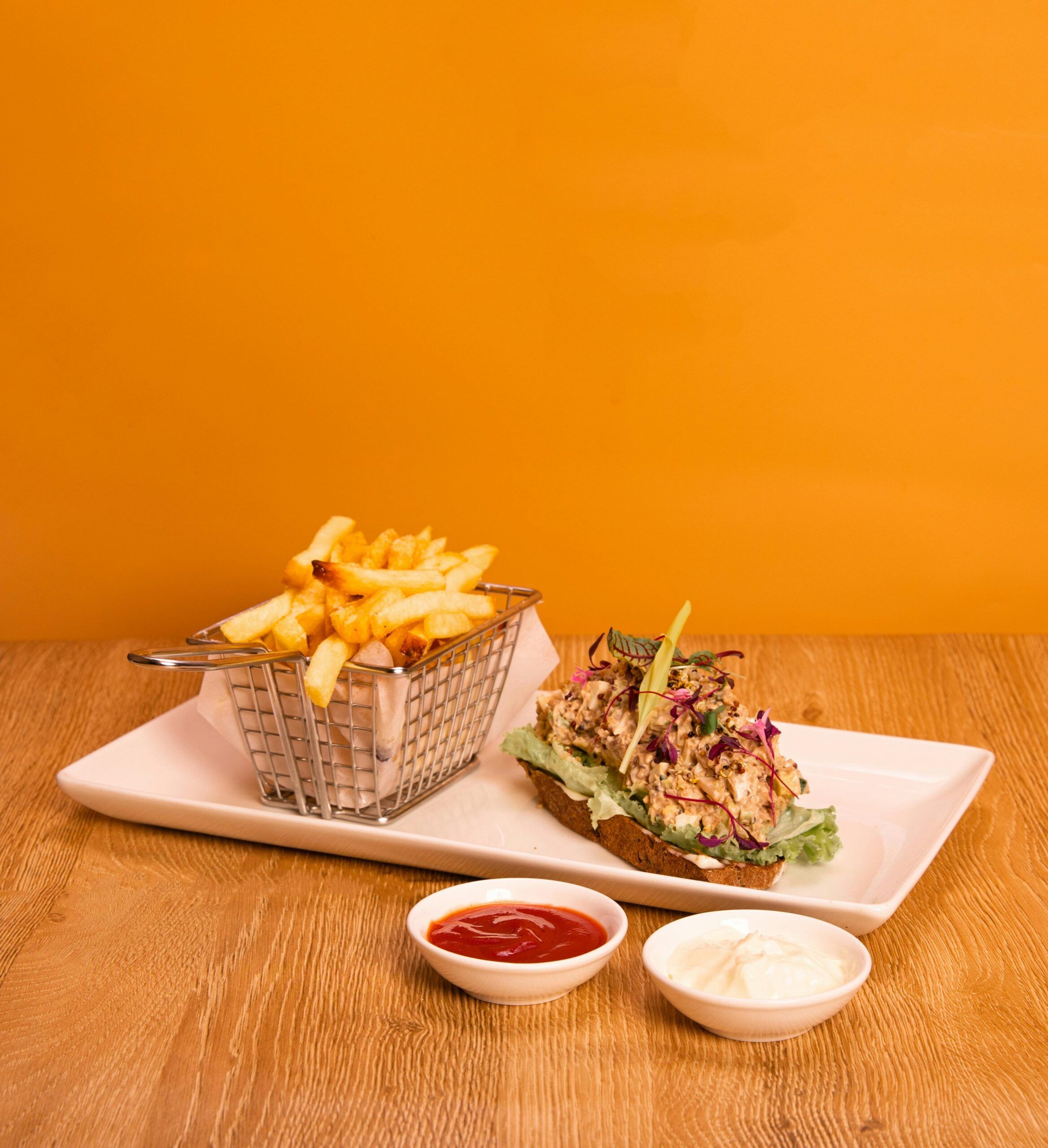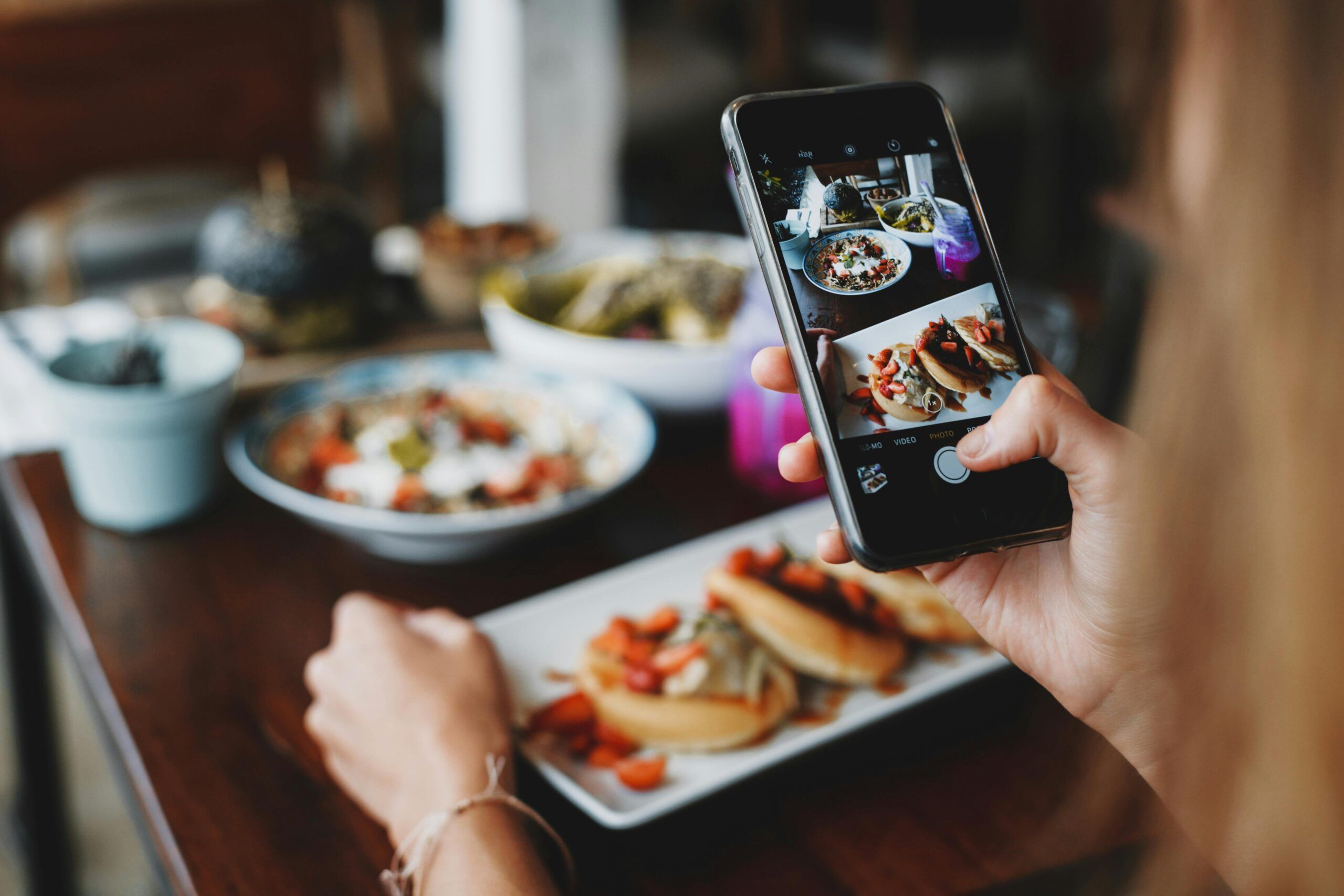- Why Menu Customization Tools Are Critical For Restaurant Success
- What To Look For In Online Menu Customization Tools
- Tool #1: Menu Design Platform
- Tool #2: Visual Menu Builder
- Tool #3: Menu Management System
- Tool #4: Digital Menu Creator
- Tool #5: Menu Optimization Software
- Tool #6: Multi-Location Menu Manager
- Tool #7: Integrated Ordering Platform
- Comparing Your Options: Which Tool Is Right For Your Restaurant?
- Implementation Best Practices: Getting The Most From Your Menu Tool
- FAQ
For restaurants offering online ordering, the right tools can make the difference between a smooth experience and one that costs you customers.
Today’s diners expect accuracy, flexibility, and speed when they browse and order from digital menus. That’s why using online menu customization tools isn’t optional anymore; it’s a necessity.
Whether you’re adjusting prices across multiple locations or testing a new seasonal dish, the right online menu builder can help you stay agile and efficient.
In this guide, we’ll walk through the most important tools available to help you design, update, and manage your digital menu. You’ll also see how Orders.co brings all of these features together in one integrated system built for real restaurant needs.
Let’s get into it.
Want faster, easier menu updates? Schedule a demo with Orders.co and see how it can help.
Key Takeaways
- Digital menu tools are essential for accuracy and consistency across platforms.
- Real-time updates reduce errors and save time, especially for multi-location restaurants.
- Visual and data-driven tools boost sales by improving layout and item performance.
- Integrated systems like Orders.co streamline updates, reporting, and third-party syncing.
- Success comes from combining the right tools with clear strategy and staff training.
Why Menu Customization Tools Are Critical For Restaurant Success
Managing a restaurant menu has never been more complex or more important. Between in-house dining, online orders, third-party apps, and delivery services, your menu now lives in multiple places at once.
And if the details aren’t consistent everywhere, customers notice.
Using online menu customization tools allows restaurants to stay consistent, make updates quickly, and test changes without manual work. That means fewer order mistakes, more upsells, and a better guest experience overall.
According to the National Restaurant Association, 77% of consumers say they now check a restaurant’s menu online before deciding where to eat.
If your digital menu is hard to navigate, missing key info, or out of date, you’re losing business before the customer even walks in or logs in.
Here’s why that matters:
- Digital menus are the new front door. They often shape a guest’s first impression.
- Inaccurate menus lead to abandoned orders. A missing item or wrong price can cost you a sale.
- Updating menus manually costs time. And time, especially during service hours, is money.
That’s why smart restaurant owners are investing in the right digital menu tools. These tools help you stay organized, adapt fast, and deliver the experience modern customers expect.
Next, we’ll look at what features to prioritize when choosing the best online menu customization tools for your restaurant.
What To Look For In Online Menu Customization Tools
Not all online menu customization tools are created equal. Choosing the right one means knowing what features actually support your restaurant’s needs.
Here’s what to focus on:
Easy-to-Use Interface
You shouldn’t need a tech expert to change a price or add a special. The best online menu builder tools are simple enough for daily use by restaurant managers and staff. Look for drag-and-drop builders or platforms that let you update items in just a few clicks.
Real-Time Edits Across Channels
Whether a guest is browsing your website or placing an order through a third-party app, your restaurant menu customization tool should update everywhere at once. This is especially important if you make frequent changes to pricing, availability, or promotions.
Visual Customization Options
Your menu should reflect your brand. The ability to adjust fonts, colors, images, and item layout matters. Good menu design tools for restaurants allow for visual consistency across digital and printed formats.
Integration with Ordering and POS Systems
Updating your menu in one place should update it everywhere. That’s only possible if your digital menu tools integrate with your POS system, online ordering platforms, and delivery partners. This also cuts down on errors and duplicate work.
Support for Multi-Location Menus
If you run multiple locations, you need tools that let you manage all menus from one dashboard, with the flexibility to customize by location. A good multi-location menu manager can save hours each week and ensure consistency.
Menu Performance Insights
Some platforms offer more than just customization; they help you understand what’s working. If your restaurant menu customization software includes reporting features, you can track best-sellers, test item placements, and make smarter pricing decisions.
Scalable and Affordable Pricing
Whether you’re a single-unit shop or managing several locations, your tool should scale with your business. Look for transparent pricing that matches your size and menu complexity.
Want to manage all your menus in one place with full customization and reporting tools?
Explore Orders.co features to see how we make digital menu management easier.
Tool #1: Menu Design Platform
A Menu Design Platform helps restaurants build digital menus that are both functional and visually appealing. It’s where layout, categories, pricing, and item descriptions all come together in a format customers can easily browse, whether on a mobile device, third-party app, or your own website.
One of the most reliable tools in this category is Orders.co, which offers a built-in menu editor that’s designed for restaurant operators, not designers. You can update items, pricing, photos, and availability in real time, across all integrated platforms.
Key capabilities include:
- Real-time editing: Add seasonal items, update prices, or remove out-of-stock dishes instantly.
- Brand-friendly visuals: Upload high-quality images, adjust layouts, and ensure your online menu reflects your restaurant’s style.
- Cross-platform syncing: Any changes you make apply across your ordering platforms, delivery apps, and POS.
This tool is ideal for single-location restaurants, pop-ups, and food trucks that need flexibility without the overhead of a full marketing team. It also works well for teams who manage multiple menus across online channels and want consistency without repeating tasks.
With Orders.co, your online menu customization tools are all in one place, reducing friction and helping you stay in control.
Want to simplify menu edits and updates? Explore the menu design features from Orders.co.
Tool #2: Visual Menu Builder
A Visual Menu Builder gives restaurant teams the ability to build and edit menus in a drag-and-drop interface. Unlike traditional spreadsheets or PDFs, these tools make it easy to visualize how a customer will actually experience the menu, especially on mobile or desktop screens.
Restaurants using visual builders can test different layouts, rearrange high-margin items for visibility, and adjust categories in seconds. These online menu customization tools are especially helpful for creating digital menus that don’t just look good; they’re designed to convert.
Orders.co includes a visual editor as part of its integrated platform. With it, restaurants can:
- See changes instantly before publishing.
- Adjust layouts by category or meal time (breakfast, lunch, dinner).
- Highlight featured items or promotional offers with banners.
Because the interface is built for busy teams, no design skills are required. This makes it easy for managers or kitchen staff to make fast updates, like when a new dish sells out or a promo goes live.
These kinds of digital menu tools help ensure customers see the right items at the right time, which can directly impact order size and satisfaction.
Also read:
- Restaurant Menu Optimization: 10 Steps For A Menu That Sells
- The Ultimate Guide To Selecting A Restaurant Menu Management System
- 6 Menu Management Tips: Smart Steps For Better Results
- How to Make a Catering Menu: A Step-by-Step Guide for Restaurants
Tool #3: Menu Management System
A Menu Management System helps restaurants update and organize their menus in one place. It’s especially useful for businesses with frequent changes or multiple ordering platforms.
Instead of logging into different apps to make updates, this tool ensures changes appear everywhere at once, your website, delivery apps, and even print menus. This keeps your digital and physical menu consistency intact and reduces the risk of errors.
With Orders.co, you can:
- Control your menu across all channels
- Use simple drag-and-drop editing
- Sync changes in real time across 3-rd party apps
- Support both digital and printable formats
If you’re tired of juggling updates, a menu management system can help you stay accurate and efficient.
Tool #4: Digital Menu Creator
A Digital Menu Creator is designed to help restaurants build visually appealing, easy-to-navigate menus for online customers. It’s more than just listing dishes; it’s about creating a menu experience that’s clear, mobile-friendly, and built to drive orders.
These tools allow you to:
- Add photos, item descriptions, modifiers, and prices
- Create menus that work well on all devices
- Make real-time changes without relying on a web developer
When your digital menu is clean and simple, customers are more likely to place orders.
Orders.co includes built-in digital menu tools that support customization by location, category, and availability.
Whether you’re creating menus for dine-in, takeout, or delivery, it’s all manageable from a single dashboard.
See How It Works In Real-Time
Tool #5: Menu Optimization Software
Menu Optimization Software helps you understand what’s working and what’s not on your menu. These tools use data from sales, customer behavior, and profitability to suggest improvements like which items to highlight, reprice, or remove altogether.
For example, you might find that a high-cost dish is rarely ordered or that certain combinations consistently lead to higher order values. This kind of insight can guide small changes that have a big impact on profits.
What these tools typically help with:
- Analyzing item performance by profitability and popularity
- Testing different prices or layouts to improve sales
- Suggesting upsell or cross-sell opportunities based on data
A Harvard Business Review report showed that companies using data-driven decision-making are 5% more productive and 6% more profitable than their competitors.
Orders.co includes menu performance analytics within its dashboard. It shows you item-level sales, customer preferences, and ordering trends, so you don’t have to guess what to change. You get real-time feedback on what’s driving your revenue and what’s holding it back.
Tool #6: Multi-Location Menu Manager
Managing menus across multiple restaurant locations can get messy fast. A Multi-Location Menu Manager helps you stay organized by giving you centralized control while allowing local flexibility.
With this tool, you can:
- Adjust pricing, availability, or promos per location
- Maintain brand consistency across all menus
- Make updates to multiple locations from one dashboard
Instead of juggling separate systems, this tool helps prevent errors and keeps menus aligned, especially when using digital menu tools or third-party platforms.
Orders.co offers built-in multi-location menu management, letting you update menus across all ordering platforms in a single view. Whether it’s a price change in one city or a new item rollout nationwide, it’s fast and accurate.
Tool #7: Integrated Ordering Platform
An Integrated Direct Ordering Platform combines menu customization, online ordering, and backend reporting in one place. It’s more than a menu tool; it’s the foundation for a consistent and efficient digital dining experience.
This type of platform supports your operations by helping you:
- Build and manage your online menu builder with full control over categories, pricing, and modifiers
- Sync real-time updates across third-party apps, websites, kiosks, and Google Business Profiles
- Track order performance, top-selling items, and customer behavior
- Connect menu changes directly to sales and location-specific data for smarter decisions
What makes a tool like this stand out is how connected it is. For example, Orders.co offers over 30+ integrations with major delivery and POS platforms, including Uber Eats, DoorDash, Toast, and Square. That means your menu updates only need to happen once, saving time and preventing errors across your channels.
It also comes with local business optimization features, helping you make sure each location has menus tailored to its market while staying on brand. Whether you run one restaurant or twenty, this system helps maintain consistency and performance.
Comparing Your Options: Which Tool Is Right For Your Restaurant?
Not every restaurant needs the same type of tool. What works for a single-location café might not be enough for a multi-unit chain or delivery-first concept. Before choosing a solution, consider your goals, tech setup, and customer habits.
Here’s a quick guide to help you evaluate:
You might need a basic menu builder if you:
- Only operate one location
- Just started offering online orders
- Want to manually manage your menu updates
A more advanced menu design platform fits if you:
- Frequently update seasonal items or pricing
- Care about brand visuals and customer browsing experience
- Need easy drag-and-drop design tools
A full-featured menu management system is ideal when you:
- Operate across multiple channels (website, delivery apps, POS)
- Need centralized control with location-specific flexibility
Want to reduce manual updates and errors
An integrated ordering platform makes sense if you:
- Want everything, ordering, menu edits, reporting: in one place
- Use third-party integrations and need menus to stay synced
- Rely on data to make menu, pricing, and marketing decisions
Remember, it’s not just about the number of features. It’s about how well those features work together. A tool that looks great on paper can slow you down if it doesn’t integrate with your current systems.
Tip: Ask vendors about integration options, onboarding support, and how they handle ongoing updates.
Orders.co combines all of these needs into a single platform, making it a practical choice for growing restaurants that want control, consistency, and insights without extra tech complexity.
Implementation Best Practices: Getting The Most From Your Menu Tool
Choosing the right online menu customization tools is only half the equation; getting real results comes from how you implement them.
Here’s how to set your restaurant up for success:
Start with a Clear Menu Strategy: Before using any online menu builder, outline what you want your menu to do. Are you highlighting high-margin items? Promoting seasonal specials? Reducing complexity? A clear goal helps you use the right features from the start.
Clean Up Your Existing Menu
Before migrating or designing a digital version, review your current offerings:
- Remove underperforming items
- Group similar items for easier browsing
- Write concise, accurate descriptions
This will make your restaurant menu customization more effective and improve the customer experience right away.
Assign Ownership: Decide who on your team is responsible for ongoing updates. Even the best menu design tools for restaurants need human input, especially when it comes to keeping prices, availability, and photos up to date.
Train Staff on the Tool: Whether you’re using a basic editor or a full integrated ordering platform, make sure your team knows how to use it. This reduces mistakes and gives you more control over daily operations.
Connect to Your POS and Ordering Systems: A strong menu tool should integrate with your existing setup. Orders.co, for example, supports 30+ integrations, including major POS providers and third-party delivery apps. This means fewer manual steps and fewer errors.
Monitor Results and Adjust
After launching your updated digital menu, use built-in analytics to:
- Track best-sellers
- Identify items with low conversions
- Monitor changes in average order value
This feedback loop is key to long-term success with any digital menu tool.
FAQ
What are the best online menu customization tools for restaurants?
The best online menu customization tools offer flexible design, easy editing, and reliable integration with your ordering systems. Look for platforms that support real-time updates, multi-location control, and digital menu board management. Tools like Orders.co combine these functions with direct ordering, analytics, and 30+ integrations in one place.
How much do menu customization tools cost?
Pricing varies depending on the features and the size of your operation. Some basic digital menu tools may offer free tiers, while full-service solutions like Orders.co offer custom pricing based on your restaurant’s needs, especially if you require integrations, reporting, or multi-location support.
What features should restaurant menu tools have?
Strong restaurant menu customization tools should include:
- An easy-to-use online menu builder
- Support for digital menu boards
- Real-time editing and syncing
- Integration with delivery platforms and POS systems
- Custom pricing and item-level control
How do customized menus increase restaurant sales?
A well-structured digital menu can increase conversion by making ordering easier. Features like upsells, clear categories, and optimized item descriptions improve the customer experience. According to the National Restaurant Association, over 60% of customers say menu readability impacts their purchase decision.
Can I integrate menu tools with my POS system?
Yes, but not all platforms offer seamless integration. Orders.co supports 30+ integrations, including major POS systems, so your digital and in-house menus always match, with no double entry required.
What’s the ROI of investing in menu customization tools?
Restaurants using online menu customization tools often see higher order accuracy, fewer missed modifications, and increased average ticket sizes. Orders.co users also benefit from faster updates, fewer errors, and better data visibility, improving both customer satisfaction and profit margins.
Are digital menu tools useful for smaller restaurants?
Yes. Even a single-location restaurant can benefit from tools that simplify updates and sync menus across platforms. Using an online menu builder helps avoid mistakes and gives your team more control, no matter the restaurant size.
How do I know if I need a full platform or just a menu builder?
If you’re only managing a single menu, a simple builder might be enough. But if you update often, operate across channels, or need analytics, it’s smarter to choose an integrated solution like Orders.co. It combines menu management with ordering, reporting, and marketing features in one system.


